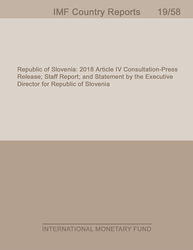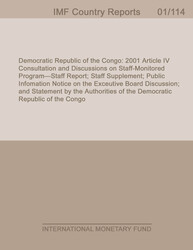
Japan: 2014 Article IV Consultation-Staff Report; and Press Release
KEY ISSUESAbenomics is gaining traction, but progress across the three arrows has been uneven andmedium-term risks remain substantial. Inflation has risen, a consumption tax increase has been implemented, and there are signs of a transition to private-led growth. However, structural reforms have progressed slowly and a medium-term fiscal plan beyond 2015 is still to be articulated. Uncertainty is therefore high whether the recovery and exit from deflation will become self sustained under current policies.More forceful growth reforms are needed to overcome structural headwinds to raising growth and ending deflation The next round of structural reforms should lift labor supply, reduce labor market duality, enhance risk capital provision, and accelerate agricultural and services sector deregulation. Corporate governance reforms already underway could help reduce firms' preference for large cash holdings.A concrete medium-term fiscal reform plan is urgently needed. Given very high levels of public debt, implementation of the second consumption tax increase is critical to establish a track record of fiscal discipline. Adoption of a concrete medium-term fiscal consolidation planbeyond 2015 would build confidence in the sustainability of public finances and allow more flexibility to respond to downside risks. Plans to lower the corporate tax rate have growth benefits, but should proceed in combination with measures to offset revenue losses and be consistent with plans to restore fiscal sustainability.Monetary policy is appropriately accommodative. With inflation and inflation expectations increasing, no further easing is needed at this point. In case downside risks to the inflation outlook materialize, the Bank of Japan (BoJ) should act swiftly through further and/or longer- dated asset purchases. Communication should focus on achieving 2 percent inflation in a stable manner aided by a more transparent presentation of the BoJ's forecast and underlying assumptions.The financial sector remains stable. Portfolio rebalancing by financial institutions and investors is desirable but also raises new risks, including from greater overseas engagement. In regional banks, limited growth opportunities and low net interest margins could further undermine core profitability and weaken capital buffers. Supervisors should continue to be proactive in monitoring these risks.Japan's external position is assessed as broadly in balance—compared to moderately undervalued last year—because of structural changes in the external sector, including from the offshoring of production and sustained high energy imports, which have become more apparent.Launching all three arrows will create benefits for the region and the global economy. Spillovers via the trade channel and capital flows are expected to increase in coming years with uncertain net effects—higher exports and capital outflows—in the short term. As long as Japan continues to proceed with its reforms, incomes will rise and fiscal risks decline, which will bepositive for the global economy.
Publication date: July 2014
ISBN: 9781498357302
$18.00
Add to Cart by clicking price of the language and format you'd like to purchase
Available Languages and Formats
| English |
Prices in red indicate formats that are not yet available but are forthcoming.
Topics covered in this book
This title contains information about the following subjects.
Click on a subject if you would like to see other titles with the same subjects.
Money and Monetary Policy , International - Economics , Public Policy ,
Also of interest
Summary
Copyright © 2010 - 2026
Powered by:
AIDC



